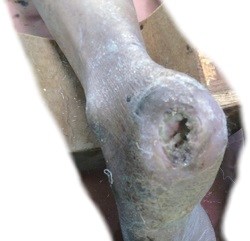Heel Ulcers & Heel Gangrene
“THE HEEL DOES NOT HEAL…” This is an often heard adage .
Heel ulcers though difficult to treat nevertheless do HEAL if multiple treatment modalities and advanced wound care as per wound progression are used. Though it has a slower rate of healing it does not mean that the foot is not salvageable.
The weight of the body is transmitted from the femur and tibia through the heel and heads of the metatarsals to the ground. This is while standing, whereby the weight gets transmitted equally through these zones. But while walking or running, the heel is the first part of the body to transmit the weight to the ground at the heel strike. As the foot goes through various phases of walking, different zones are transmitting pressure.
However due to anatomical reasons, ulcers of the heel are much more serious and difficult to treat when compared to ulcers in other areas.
The heel has a comparatively less blood supply, as compared to other parts of the foot. This is due to the presence of the heel fat pad. Also with age and time, the capacity of this pad to absorb shock decreases and contributes to ulceration. With the continued pressure of walking and reduced vascularity, alongwith contributory factors like infection, renal failure etc. these ulcers become difficult to treat and salvage…….that is not to say that there is no hope for such patients. However, it is a fact that heel ulcers lead to much more longer periods of hospitalization and have a higher morbidity & mortality as compared to ulcers of say the ball of the great toe or the metatarsal regions.
Limb salvage after heel ulcers is much more difficult and involves multiple modalities of treatment than other plantar ulcers.The exact incidence of diabetic heel ulcers is not known.
Progression of infection to heel bones(osteomyelitis) or tissue planes can result from failure of conservative treatment and lead to lower limb amputation. Aggressive handling of such ulcers with the aims of controlling infection, removing pressure and increasing the vascularity of the area does help in healing these ulcers.
Heel Ulcer in k/c/o Diabetes Mellitus with Peripheral Arterial Disease & Ischaemic Heart Disease
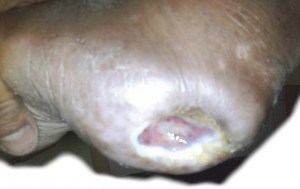
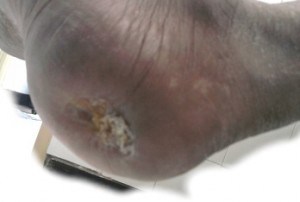 Few Months after Wound Care + supportive treatment
Few Months after Wound Care + supportive treatment
Heel Gangrene :
Patient who was operated at outside centre, came with heel gangrene with advice for amputation of the foot. He was re-operated and put on advanced wound care. Complete closure of the heel wound was achieved and patient mobilized in special footwear.
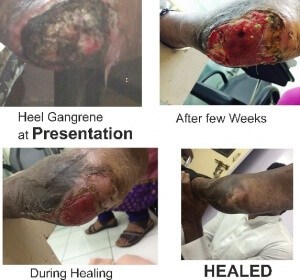
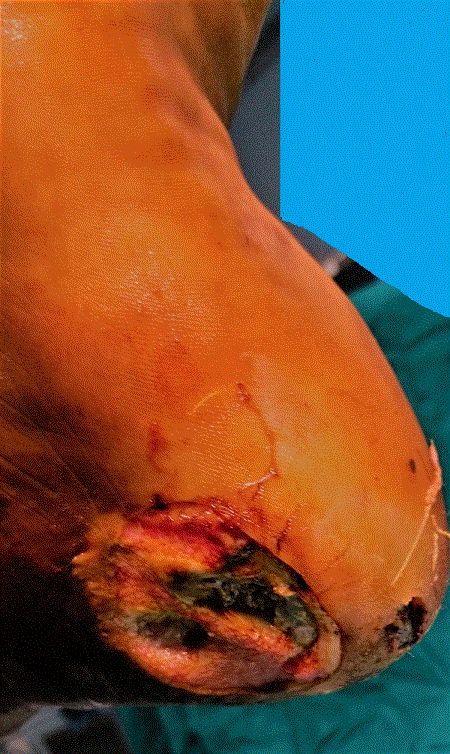
Necrotic heel at presentation 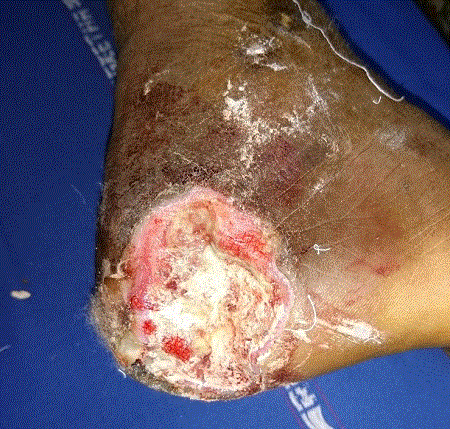
During treatment 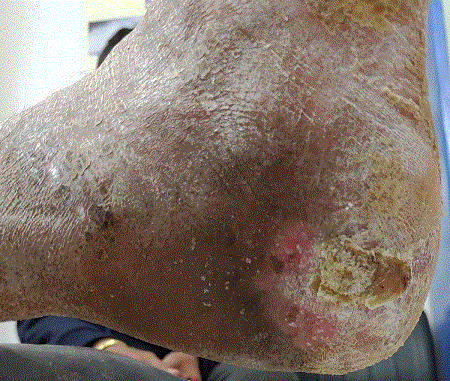
Completely Healed and patient mobilized in custom pressure reducing footwear
To see some more pictures of treated cases, CLICK HERE

